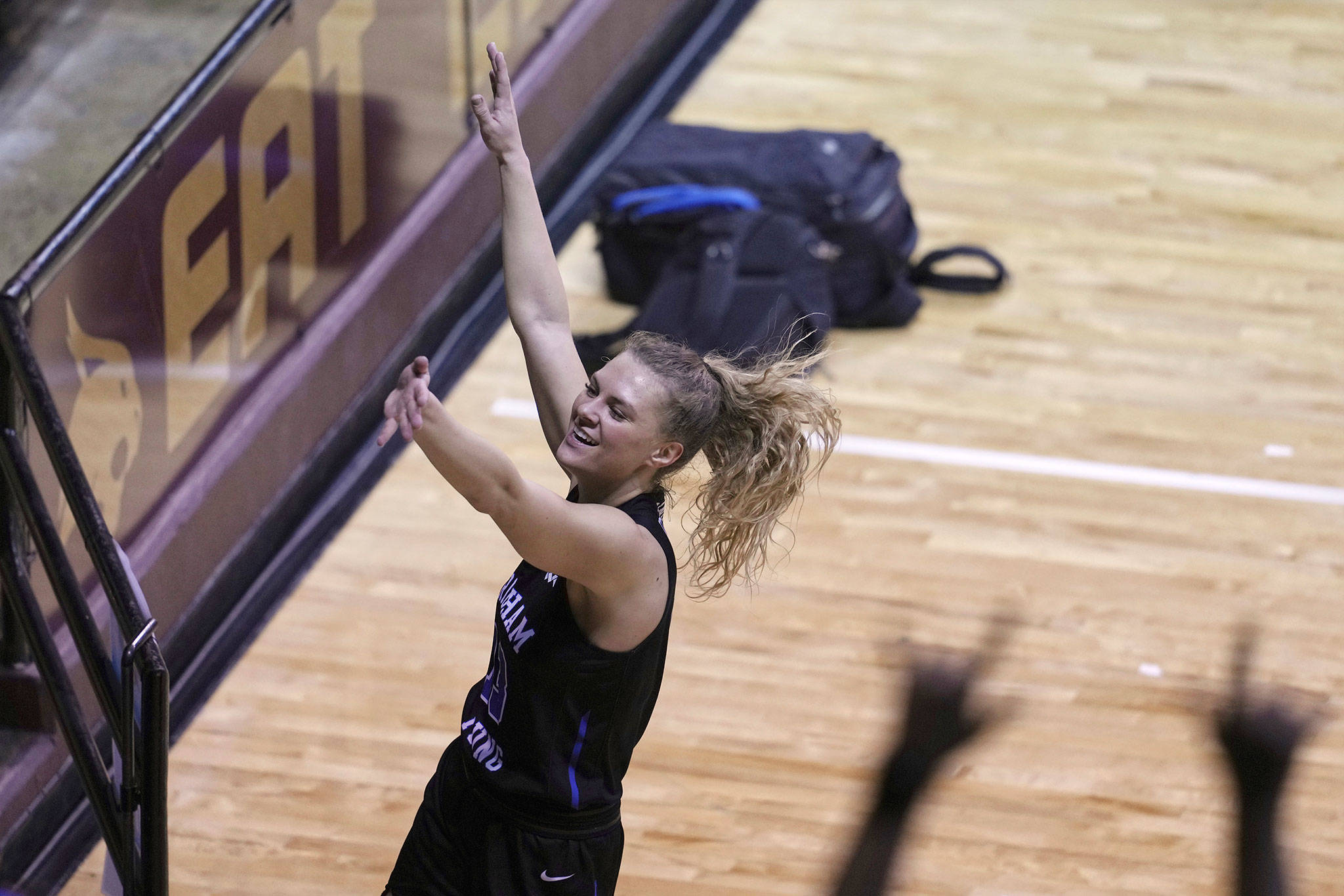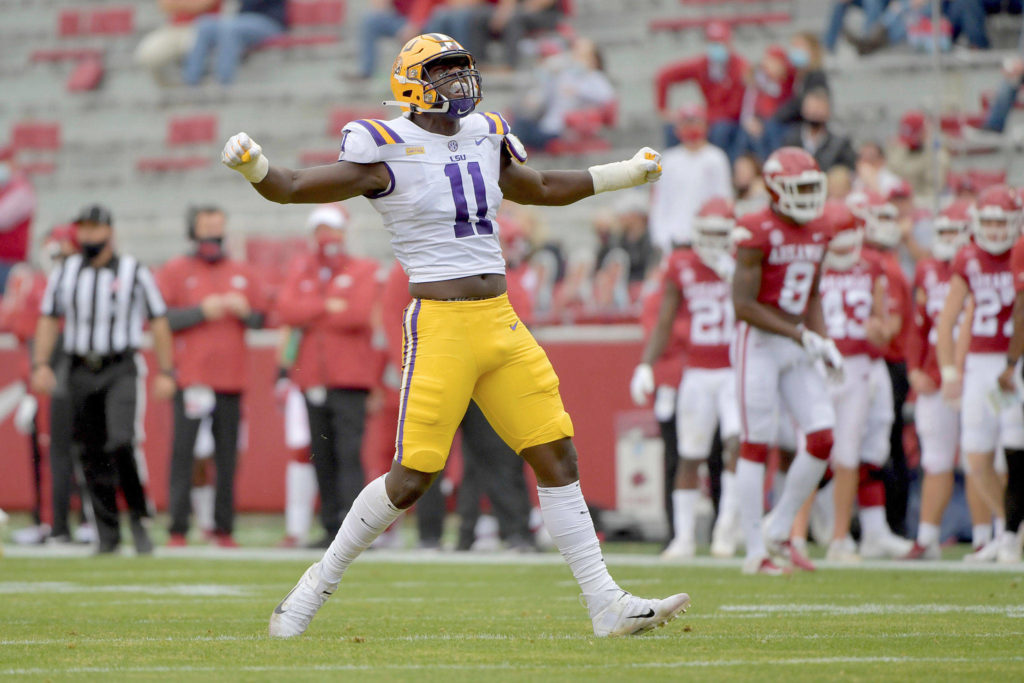July 1 was the day that changed college athletics forever.
On that date, the NCAA instituted a new policy that allows college athletes to cash in. Following decades of debate about whether college athletes should be eligible for compensation beyond their scholarships, the door is now open for them to make money off their names, images and likenesses (NIL).
Which left me asking one question: What does this mean for the college athletes from Snohomish County?
The NIL decision is expected to be a financial boon for the nation’s highest-profile college athletes. But what does it mean for the rank-and-file? Right now the county doesn’t have much in the way of stars in the revenue-generating college sports at Power Five institutions, the way Lake Stevens High School graduate Jacob Eason was when he was the starting quarterback for the University of Washington football team in 2019. Currently it’s more a case of role players in the big sports and stars in sports that aren’t the big money generators.
Will these types of athletes be able to benefit from the NIL decision? To gain some perspective I tracked down Nate Ivie. Ivie is the director of basketball operations for the Edmonds College men’s team, and for his day job he is the vice president of sales for TUNE, a Seattle-based digital marketing company. Therefore, he is uniquely positioned to understand the subject.
As of today I am accepting and considering all business opportunities.
Please contact me at the following social media handles:
-Instagram: kylergordon2
-Twitter: kyler_gordon
Looking forward to working with you🤝— Kyler Gordon (@kyler_gordon) July 2, 2021
“I think there are a lot of ways to earn revenue from your name, image and likeness,” Ivie said. “Most people think of the EA Sports college football video game, where they couldn’t use names for the players, they could only use numbers. Players will get paid for their names now. You could promote the local car dealership using your name and make five grand, 50 bucks, whatever it may be. Maybe they’re a good gamer and can start streaming themselves playing on Twitch and have the viewers pay tips. But the big guns are going to be those who have hundreds of thousands of followers on social media. They’ll be able to work with big brands and get paid a lot of money.”
That’s great for the Zion Williamsons and Johnny Manziels, who were such big stars in college they became household names. But what about someone like Ali Gaye? The Edmonds-Woodway High School product is smack in the middle of college sports central, starting at defensive end for the LSU football team. While being a starter in SEC football territory is certainly an advantage, Ivie said the fact Gaye doesn’t have a large following on social media — about 3,500 followers on both Twitter and Instagram — limits his ability to make money from his NIL.
“Unless he has some kind of niche, like he’s a really good gamer or is really into health and fitness and posts about his workout plans, it’ll probably be difficult to monetize his following,” Ivie said. “My suggestion to athletes who have smaller followings is to approach brands either for free merchandise, or pay to post: Here’s $25 to post about a workout supplement.”
One local athlete who does have that kind of following, however, is Paisley (Johnson) Harding. The Glacier Peak High School graduate, who is an all-conference guard for the BYU women’s basketball team, has spent her time in college building her personal brand, which now includes a YouTube channel with 49,000 subscribers and an Instagram account with 28,000 followers. Ivie said the YouTube channel in particular could be a revenue generator.
“A YouTube channel is potentially a great way to make money, at least to start,” Ivie said. “It’s all video, and brands love videos as opposed to a post or a picture. It’s a little more interactive, you learn about the influencer’s or athlete’s personality a little better through video.”
Ivie said it’ll be much more difficult for athletes at NCAA Division II or Division III schools to make money from their NIL, unless they have a following that stems from something other than being an athlete. The local community colleges are in the Northwest Athletic Conference, which isn’t governed by the NCAA, so as of now those athletes are not affected by the NIL decision.
Ivie went on to say he thinks the NIL decision will further separate the tiers among college athletes, with the best and most famous getting bigger and bigger in comparison to their teammates and other athletes at school. He also said it will be paramount for college athletic departments to figure out how to guide their athletes through this world, not only to manage things properly, but also for recruiting purposes — will top athletes choose schools based as much on their marketing-assistance teams as their coaching staffs?
And what does this mean for elite high school athletes? Do they need to start cultivating their brands in order to maximize their money-making potential once they reach college? Especially on newer and emerging platforms like TikTok? Frankly, that is a frightening thought.
Ultimately, we don’t know exactly where this is all headed. But one takeaway from the discussion with Ivie? Don’t assume that the NCAA’s decision on NIL means all college athletes are immediately going to get rich. Maybe that will be different in the future, but for now it seems that for most college athletes it’s not going to be transformational.
Follow Nick Patterson on Twitter at @NickHPatterson.
Talk to us
> Give us your news tips.
> Send us a letter to the editor.
> More Herald contact information.


























